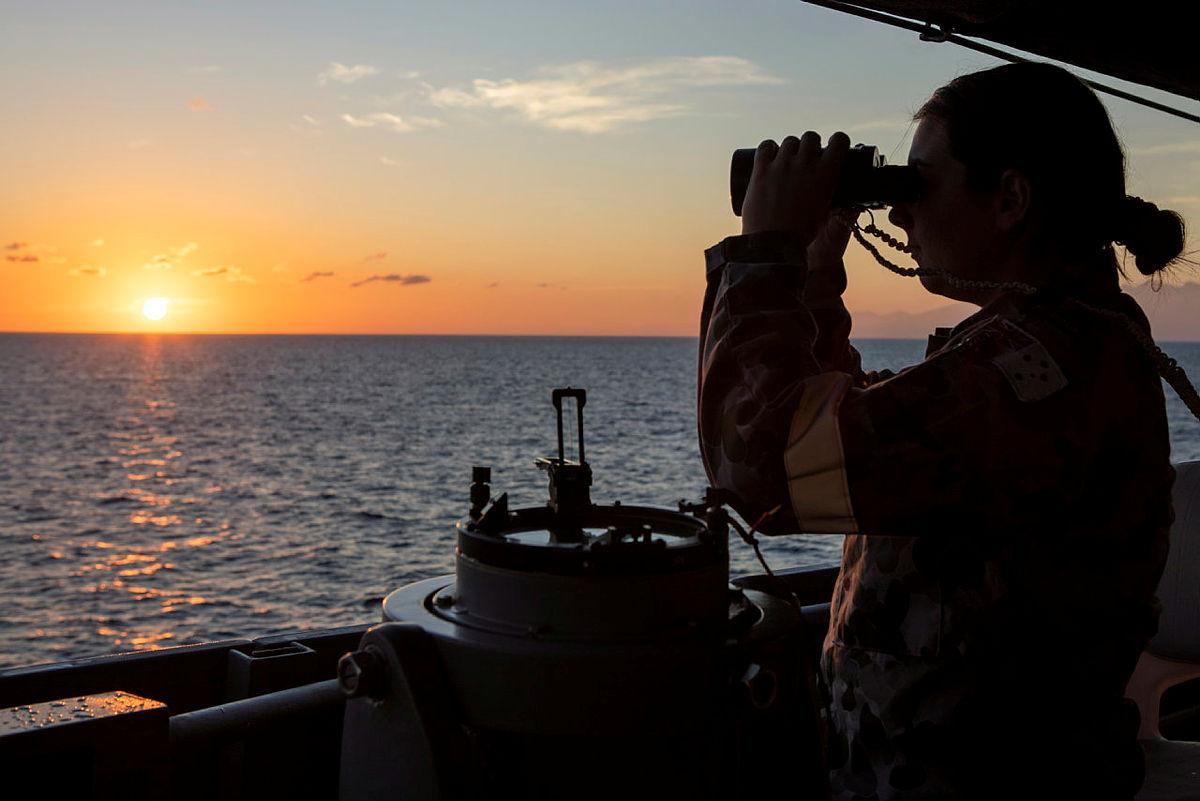
Have you ever heard of Combined Joint Headquarters (CJHQ) Top End? Before you go racing to Google, it doesn’t exist! Yet Australia and its partners need such an arrangement. It’s time to leverage our strategic geography and make a bold commitment to maritime security and multilateral military cooperation by establishing just this kind of headquarters. At the very least, a CJHQ in northern Australia could help to coordinate humanitarian assistance and disaster responses in a region facing more frequent and intense weather events.
In the 2020 defence strategic update, the government committed to invest ‘approximately $270 billion over the coming decade in new and upgraded Defence capabilities’ in order to ‘project military power and deter actions against us’. Unfortunately, there’s little mention of how the Australian Defence Force will command and control all these new capabilities.
The strategic update also says that ‘defence planning will focus on our immediate region: ranging from the north-eastern Indian Ocean, through maritime and mainland South East Asia to Papua New Guinea and the South-West Pacific’.
As one would expect, there’s scant detail in the update on the command-and-control structures to coordinate and synchronise these defence planning activities with our non–Five Eyes partners. Hard-won experience reveals that this sort of cooperation doesn’t just occur and is a perishable commodity requiring continuous long-term commitments.
Technology permits command and control to be done remotely, so some will argue there’s no need to create a new headquarters in the Top End—be it the Northern Territory or northern Queensland. This perspective does have a ring of truth, but strategic geography and proximity still matter, and so does people-to-people cooperation.
Establishing a combined headquarters with joint capabilities across the armed services would afford Australia an all-new opportunity to help meet one of the strategic update’s primary aims: shaping our strategic environment by being an ‘assertive advocate for stability, security and sovereignty in our immediate region’.
Placing a coalition headquarters in the north would be a firm step towards ‘strengthening international engagement, particularly with the United States, Japan, India, ASEAN and other allies and partners in our region’.
A northern CJHQ would lend itself to the disaster-response operations that Australia and its partners have routinely found themselves conducting in the past eight years: Super Typhoon Haiyan in the Philippines in November 2013; the loss of Malaysia Airlines flight 370 in March 2014; the Nepal earthquake in April 2015; and the Sulawesi earthquake and tsunami in Indonesia in September 2018. These operations were civil–military, involving whole-of-government efforts by the nations engaged. Still, the combined defence components provided the planning and command-and-control expertise that led to their success.
A CJHQ in the north could become the focal point, not just for Australia, but for our coalition partners, for combined and joint operations that would support humanitarian assistance and disaster relief missions, as well as the planning and execution of operations in support of police and coastguard forces to counter human and drug trafficking.
It would allow Australia to host this combined effort with India, Indonesia, Japan and other partners in an area of interest common to all. In doing so, those involved would develop and practise the kind of planning and communications protocols that support humanitarian assistance and disaster relief operations.
A CJHQ would also relieve some of the burden on the ADF’s Joint Operations Command, whose primary focus is defence and combat operations.
There can be no doubt that establishing this kind of arrangement will be a monumental undertaking involving several countries, from our near neighbour Indonesia to our ANZUS and Quad partners.
One of the first challenges, though, will be far closer to home.
Getting agreement on this from Defence will be no easy task. The headquarters once responsible for all the planning and conduct of operations in northern Australia during peacetime and wartime, Northern Command, has been in a steady state of decline for years. Most of its functions now sit with Joint Operations Command in Bungendore, near Canberra. So, a commitment to returning at least some command-and-control arrangements to Australia’s north will involve revisiting some planning assumptions.
Interestingly, while the ADF’s command and primary headquarters lie beneath 26° south, the United States’ Indo-Pacific Command maps tend to show only the north of Australia.
Regardless of type and composition, all headquarters are challenged with anticipating and determining viable command-and-control structures that accomplish specific operations while retaining the agility to plan and execute other ongoing or new missions.
A CJHQ in the north would provide Australia and its partners with a responsive, agile and inclusive headquarters that answers an operational need and sends a powerful signal to potential adversaries and criminal groups operating in one of the most contested areas in the world.
As most military leaders, regardless of nationality, know, if you get the command-and-control right, the rest of the mission is straightforward. A combined joint headquarters in the Top End of Australia will not only get us and our allies on the right foot, but will place us on our front foot too.